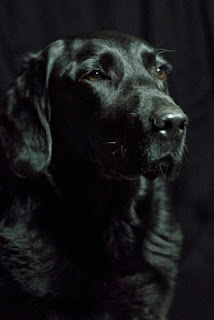5th November 2012
 |
| a selection of studio lighting |
Further input / advice from 'Candice' re other studio equipment including:
- Dedo Light
- Arry light
- Photon Beard
- Kino Light
- Light Pad
All above are different types of 'continuous lighting' (as opposed to 'flash')
We also discussed lighting techniques using 2 separate light sources - continuous and flash (using a 'light box')
DEDO light (no picture)
The Dedo lighting system was demonstrated. it was quite a small / lightweight system. A regular mistake / problem with this system was highlighted - which was an on/off switch on the power unit (sometimes not seen)
The unit shown has a tungsten light source and the bulb is able to be moved forwards and back. There are shutter or 'barn doors' that can be folded forward to direct the beam of light emitted.
Hazard - heat / burn danger.
The lighting system comes with stands and several heads.
Reflection
This system is quite compact and not too heavy (needs a domestic plug / power source) and has several heads / stands in the kit (3 or 4)
This kit could be used on a small set (not massively powerful light source) in conjunction with flash lighting ??
I certainly se a place / time when I may use this system, together will others.
 |
| Arry light |
ARRY light
The above light was demonstrated this is similar to the Dedo light and could be described as its 'big brother'. The Arry is larger, brighter and appears more robust than the Dedo. The light emitted is stronger - it is an 800w, tungsten system.
This lighting system comes in a it with 2 heads and mounts / tripods.
The system is often used on film sets.
Reflection.
Not sure that I would use this system but it is good good to be aware of its possibilities .......... perhaps it could be used to light backgrounds / backlighting ??
Danger - hot / burn hazard
 |
| Photon Beard |
PHOTON BEARD light
The above lighting system is also a tungsten continuous lighting system. There are3 lights (heads) in each system. 2 x square and 1 x oblong shape. This is a 300w system. As can be seen in the above image, the light has 'barn doors' that can be used to direct or focus the light on the subject.
Danger - hot / burn hazard
 |
| Kino Flo |
KINO (FLO) light
the above lighting system has a MUCH heavier stand and a much larger head. The head incorporates 'wrap around barn doors that can be positioned very easily / simply. Both Daylight and Tungsten strip light are provided. A 'grid' is also supplied which can be used to direct the light onto the subject.
it was recommended that this light (or a series of) could be used to take an image of a picture or tapestry hanging on a wall. several would be used (from either side) to create a uniform / even light.
 |
| Light pad |
LIGHT PAD system
The above system is the smallest and least bright as far as lighting is concerned. The light pads all come in the case shown - which contains 6 or 7 different shaped / size light pads. The light can be mounted on stands (supplied) or attached to other surfaces by clips (or even hand held). The lights do not get hot and are very strong / durable. a dimmer switch is also provided.
This system gives off very little light so would have to be used very close to the subject. .... possible small items like flowers or close up to the subject on face / head and shoulder images.
The advantages (and good practice) of weighting down the stands (with sand bags or similar) re all the above lighting systems was discussed - this will help prevent the stands / tripods falling over. The systems will be more secure and less likely to be knocked (or blown) over.
MIXING CONTINUOUS LIGHT WITH FLASH (Light box / Profoto)
Mr Bryson demonstrated how 2 differnt and separate light sources could work. Both continuous and flash lighting was used..
The continuous light source was a 'light box' (see below) and the flash light was a ceiling mounted Profoto (D1) flash light.
The camera was mounted on a studio (very solid) stand, positioned above the light box and facing (looking) down. The camera was in 'manual' setting of F8 and at 1/15th sec. (ISO 100)
 |
| Soft box and camera / camera stand |
Readings were taken of both the light box and flash. Both were set for the same (similar) intensity.
Some small stones were placed on the light box and an image taken (no flash). The light can bee seen flowing through the stones but not much detail can be seen on the top of the stones. (see below)
 |
| Back lit only (continuous) |
Another image was taken (see below) but this time a flash light (profoto) was used from above to capture more detail from the top of the stones.
 |
| Back lit & flash |
Bibliography / References
STOPPEE,B., & STOPPEE, J., 2009, Stoppees' Guide to photography & light, what digital photographers, illustrators, and creative professionals must know: Burligton, MA: Focal Press.













































